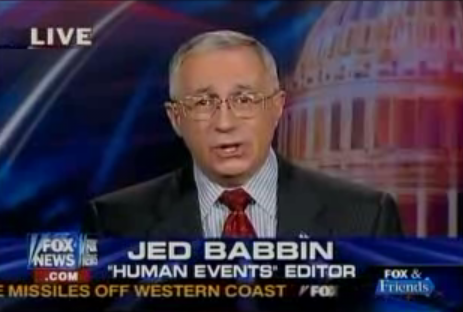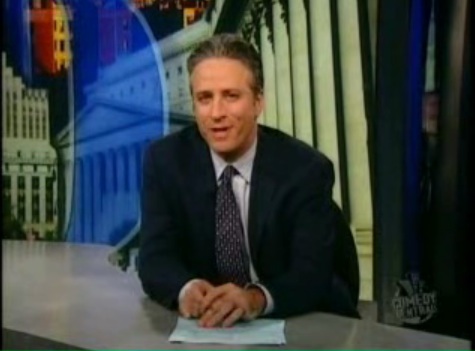Branding al-Qaida as Losers Through the British Media
Submitted by Diane Farsetta on

Submitted by Diane Farsetta on
Submitted by Diane Farsetta on
Prior to the 2003 invasion of Iraq, Bush administration officials exaggerated what U.S. intelligence agencies were reporting about Iraqi weapons, according to Congressional investigations. But even before that exaggeration, the intelligence reports had been skewed by an administration eager for war, according to recently declassified documents.
Submitted by Diane Farsetta on
 The U.S.
The U.S.
 The morning of June 20, 2006, an email message circulated amongst U.S. Defense Department officials.
The morning of June 20, 2006, an email message circulated amongst U.S. Defense Department officials.
"Jed Babbin, one of our military analysts, is hosting the Michael Medved nationally syndicated radio show this afternoon. He would like to see if General [George W.] Casey would be available for a phone interview," the Pentagon staffer wrote. "This would be a softball interview and the show is 8th or 9th in the nation."
Why would the Pentagon help set up a radio interview? And how did they know that the interview would be "softball"?
From early 2002 to April 2008, the Defense Department offered talking points, organized trips to places such as Iraq and Guantanamo Bay, and gave private briefings to a legion of retired military officers working as media pundits. The Pentagon's military analyst program, a covert effort to promote a positive image of the Bush administration's wartime performance, was a multi-level campaign involving quite a few colorful characters.
Flipping through the over 8,000 pages of documents released in connection with the program, one Pentagon pundit arguably steals the spotlight: Jed Babbin.
Submitted by Anne Landman on
 An article in the New York Times asks whether Jon Stewart of Comedy Central's Daily Show has become the most trusted man in America, pointing out that his fake
An article in the New York Times asks whether Jon Stewart of Comedy Central's Daily Show has become the most trusted man in America, pointing out that his fake
Submitted by Sheldon Rampton on
"The former spokeswoman for Arlington National Cemetery says the facility's No. 2 official has been calling military families to try to talk them out of media coverage of their loved ones' funerals, despite his denials that he does so," reports William H. McMichael.
 In early 2002, the Pentagon began cultivating retired military officers who frequently serve as media commentators, so that they would help make the case for invading Iraq.
In early 2002, the Pentagon began cultivating retired military officers who frequently serve as media commentators, so that they would help make the case for invading Iraq.
As reporters and researchers know all too well, releasing information isn't necessarily the same thing as releasing useful information.
 Case in point: the Pentagon's military analyst program. In early 2002, the Defense Department began cultivating "key influentials" -- retired military officers who are frequent media commentators -- to help the Bush administration make the case for invading Iraq. The program expanded over the years, briefing more participants on a wider range of Bush administration talking points, occasionally taking them overseas on the government's dime.
Case in point: the Pentagon's military analyst program. In early 2002, the Defense Department began cultivating "key influentials" -- retired military officers who are frequent media commentators -- to help the Bush administration make the case for invading Iraq. The program expanded over the years, briefing more participants on a wider range of Bush administration talking points, occasionally taking them overseas on the government's dime.
In April 2006, the group was used to counter criticism of then-Defense Secretary Donald Rumsfeld. The apparent coordination between the Pentagon and the pundits piqued the interest of New York Times reporters. Two years later -- after wresting some 8,000 pages of internal documents from the Defense Department -- the Times exposed the Pentagon's covert attempts to shape public opinion through its so-called "message force multipliers." A few weeks later, the Defense Department posted the same documents publicly.
It wasn't the high-octane data dump it first appeared to be. Sure, paging through the emails, slides and briefing papers is interesting, and occasionally you come across something noteworthy. But the documents are formatted in such a way that systematically exploring them via keyword searches is impossible. A cynic (or realist) might think the Pentagon was doing damage control by putting the documents out in the open, while making it near-impossible to find crucial needles in a very large, chaotically-compiled haystack.
Submitted by Diane Farsetta on
 Wondering what the Lincoln Group, the public relations firm that planted U.S. military-written propaganda in Iraqi newspapers, is up to now?
Wondering what the Lincoln Group, the public relations firm that planted U.S. military-written propaganda in Iraqi newspapers, is up to now?
Submitted by Anne Landman on
 In a new book, Pulitzer-prize winning reporter Ron Suskind charges that in the autumn of 2003, the White House ordered the Central Intelligence Agency (CIA) to forge and back-date a handwritten letter fro
In a new book, Pulitzer-prize winning reporter Ron Suskind charges that in the autumn of 2003, the White House ordered the Central Intelligence Agency (CIA) to forge and back-date a handwritten letter fro
Center for Media and Democracy (CMD)
520 University Ave, Ste 305 • Madison, WI 53703 • (608) 260-9713
CMD is a 501(c)(3) tax-exempt non-profit.
© 1993-2025